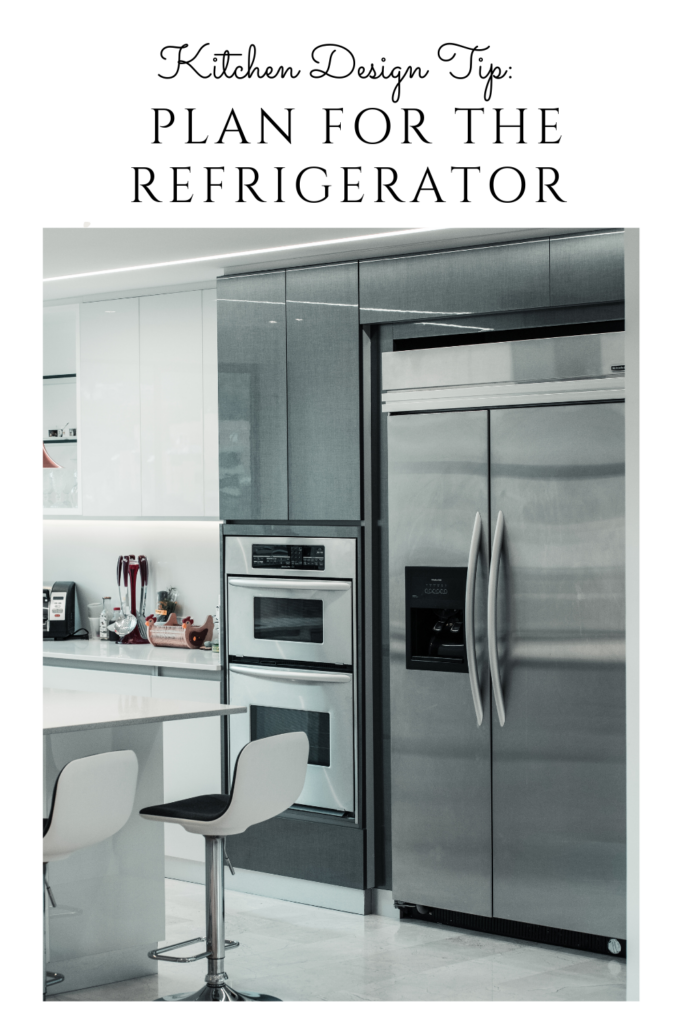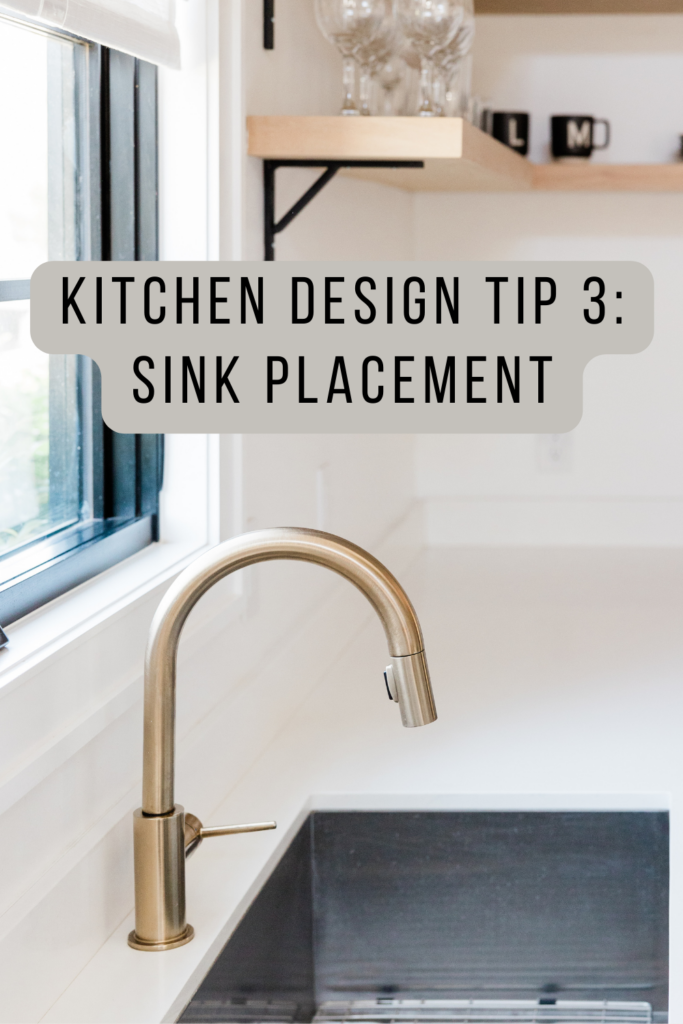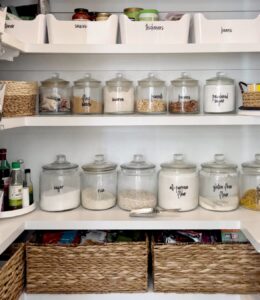
Ultimate Guide to Building Your Dream Home – Part 1 Kitchen Design
6 Kitchen Design Considerations for function and beauty
The kitchen is one of the most important rooms in the house. It’s a workhorse. It takes some serious abuse with heavy pots and pans, steam, water, spilled food and drinks, and constant use. The design of the kitchen can make using the space very unpleasant, or if it is well-designed, it can truly be the heart of the home.
If you’re planning to build or remodel a kitchen, you’ll want to keep the following tips in mind.

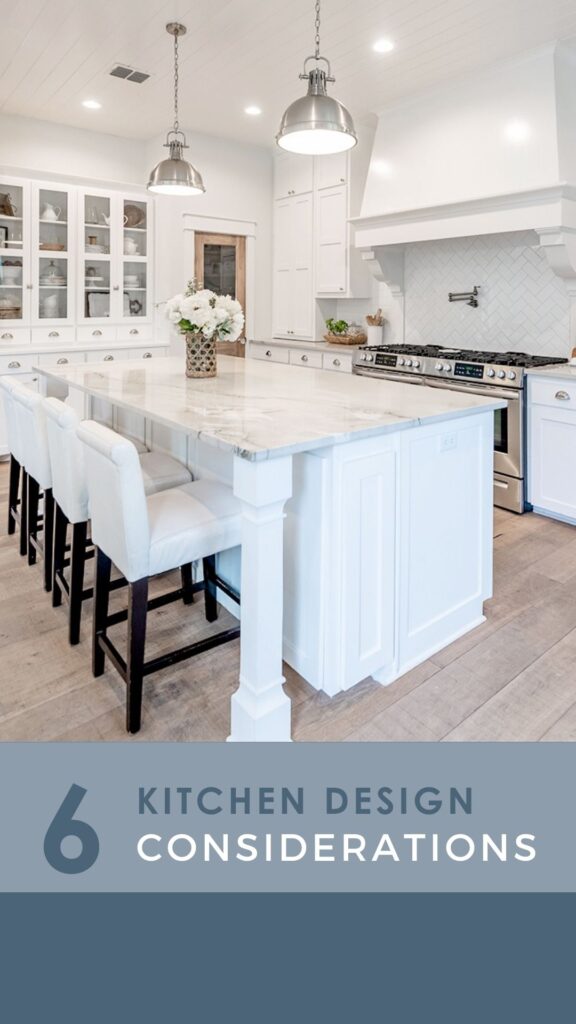


Kitchen design tip 1: Spacing Between Counters
One of the questions I get often is how much distance we left between our counters. When I designed our home, I wanted to make sure the kitchen would have a comfortable amount of space that allowed for easy movement and prevented any feeling of being cramped.
It’s also important that the workspaces are not too far apart to be functional or you’ll find yourself exhausted from walking miles a day without ever leaving the kitchen! If the counters are too far apart, carrying heavy pots and pans from one surface to another will be difficult.
Conversely, if the counters are too close, it is difficult to accommodate more than one person at a time because you’ll be bumping into each other, and trying to squeeze past each other.
So what is the right distance?
For lower traffic areas: absolutely no less than 3′, but 42-48″ is best.
For higher traffic areas (walkways between rooms): between 48-72″

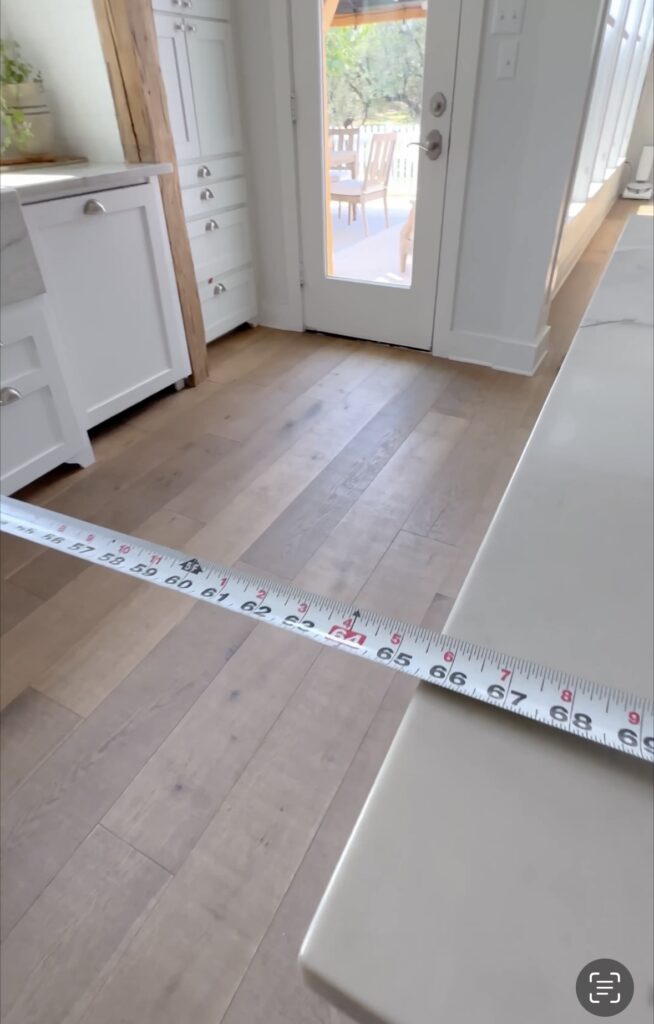
What about you? Do you prefer a cozier kitchen or lots of elbow room? Let us know in the comments below!

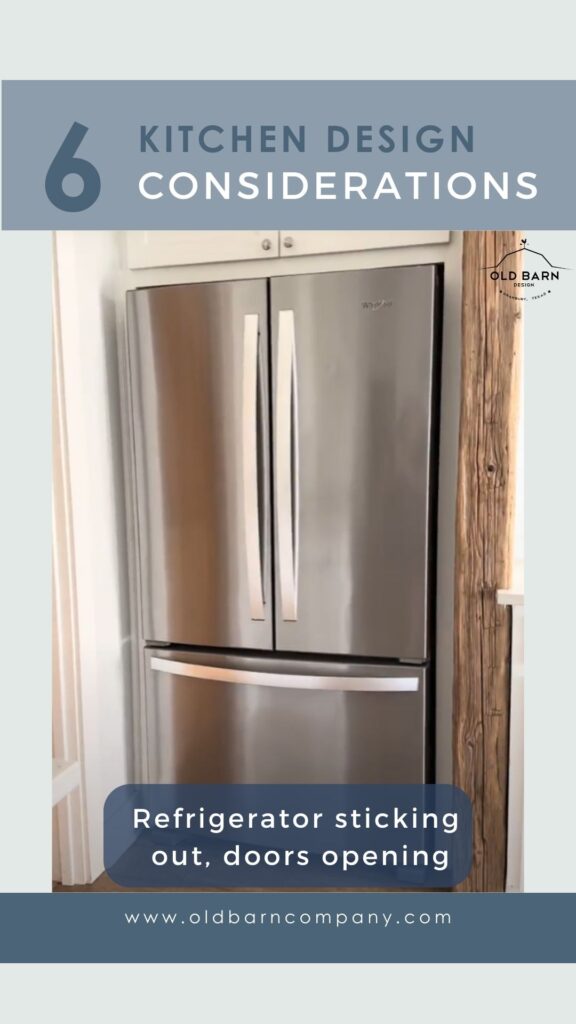
Kitchen Design Tip 2: Plan for The Refrigerator
Question: What does the average American do 22 times per day?
Answer: Open the refrigerator
That’s a lot of action for one appliance. Which is why it needs to be carefully considered.
Typical refrigerators are about 36″ deep whereas kitchen counters are only 24″ deep. This means refrigerators will stick out into the aisle 12″. I often see refrigerators sticking out into the aisle of the kitchen, creating a tight squeeze between it and the counter across from it…often making the aisle less than the recommended 3 feet.
I actually believe for optimum function, it would be best for at least 42-48″ in front of the refrigerator since the doors are often open when in use.
You can choose a counter depth refrigerator which is sometimes the best option.
In most of the floor plans I sell, I have created a deeper space behind the refrigerator to allow for a full-depth refrigerator that won’t stick out into the space.
Another thing to consider when deciding where to put your refrigerator is the space needed to open the doors. Refrigerators usually have an offset hinge that allows the doors to open without their swings requiring too much space on the side. However, they do need some space, especially if the refrigerator has very deep doors and drawers. Some refrigerators require the doors to open more than 90 degrees in order to pull out the drawers. Usually, about 2″ for French doors, and 4″ for single-door refrigerators will be plenty, but this is something to notice when you’re shopping for your refrigerator.

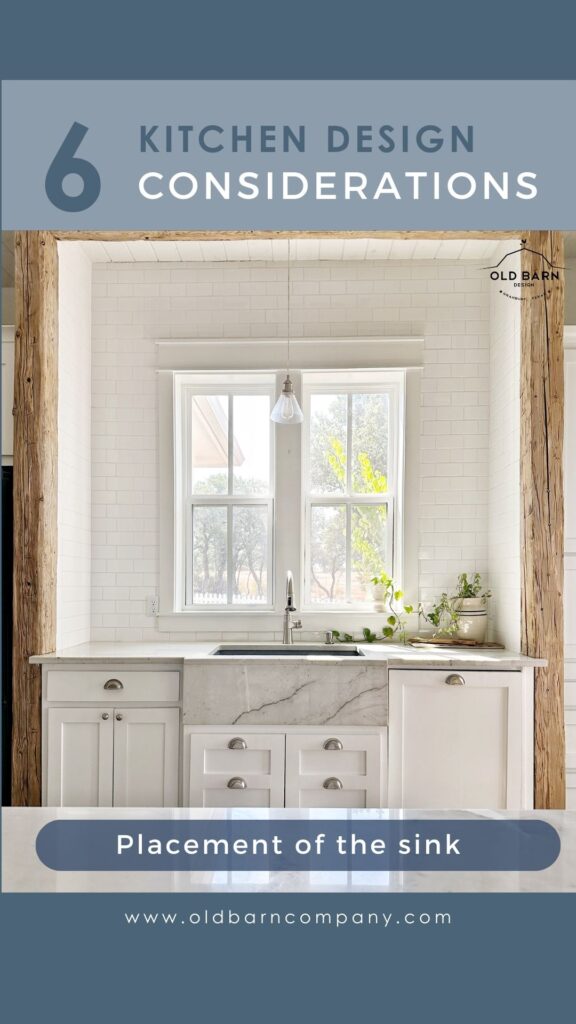
Kitchen Design Tip 3: Sink Placement
Another heavily used area of the kitchen is the sink. It is important to get the placement right for maximum functionality.
Think of all the ways you use the sink.
How do you want it placed in relationship to the dishwasher?
What do you want it to be close to?
Will you have a pot filler over the stove for filling pots?
Do you want to look out a window while you wash and have natural light at the sink?
Do you often do dishes while talking to family and guests?
If yes, then maybe you want it in the island. I don’t usually do the dishes while people are seated at the island so this was not a priority to me. I prefer to have a large uninterrupted surface for prepping, and then setting up food buffet-style on the island. I also prefer to have a window over the sink.
By putting a pull-out trash can in the island, you can swipe crumbs and messes into the trash from the island countertop.

